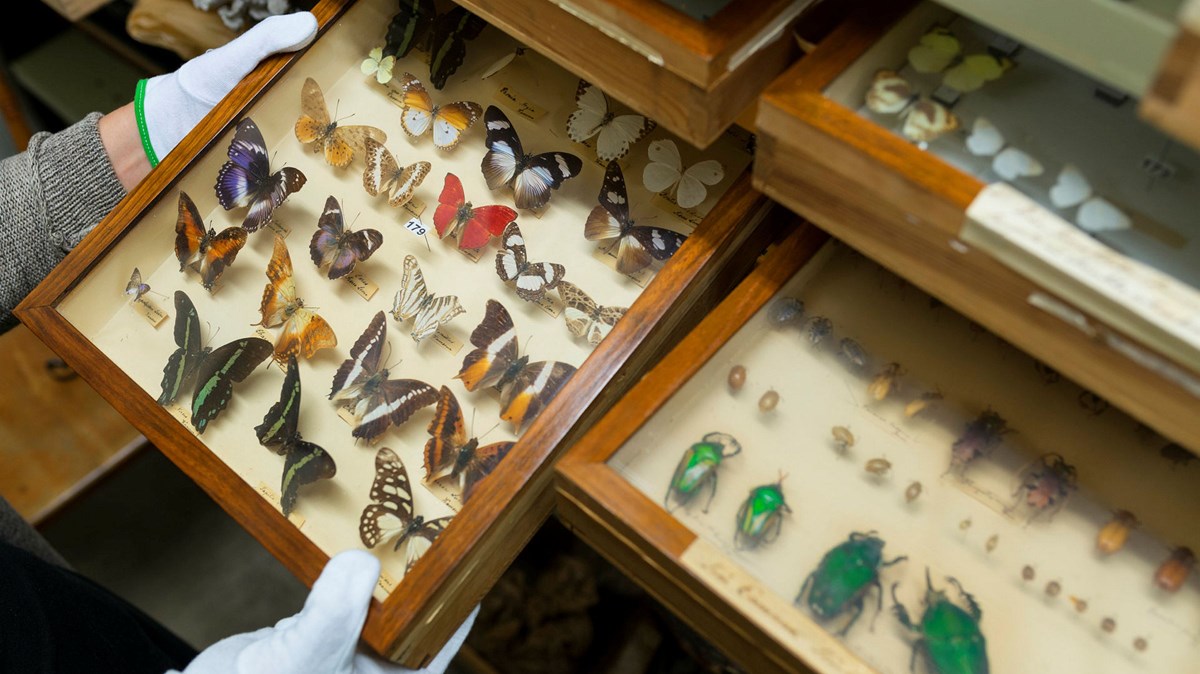The Natural History Collections

The natural history collections of Vänersborg museum has its roots in the Wenersborgs grammar school and in a noble Englishman who discovered the west of Sweden in the 1820s.
Llewellyn Lloyd - Zoologist, Ethnologist and Ladies´ Man
The natural history collections of Vänersborg Museum spring from a well- established tradition of research that began in the 1830s when Llewellyn Lloyd (1792-1876) became a resident of Vänersborg. At the time, the people of Vänersborg recognized Lloyd as an eccentric bear hunter and a ladies´ man. To the British public, he was known as the adventurer or explorer in Sweden. Several books written by Lloyd give extensive descriptions of the Swedish fauna and landscape as well as of the country´s people and culture. These descriptions were highly appreciated in Great Britain and one of Llewellyn Lloyd´s readers and admirers was Charles Darwin.
Charles Johan Anderson – Llewellyn Lloyd’s son
Llewellyn Lloyd´s son was raised by his father in Vänersborg. Charles Johan Anderson (1827-1867) was taught in zoology from an early age. During the 1850 and 60s he became one of Europe´s most prominent explorers of South Africa. He wrote several travelling books for which he was awarded prizes. The books were published in both Sweden and Great Britain.
Collections from the National Museum
In the 1860s a grammar school, Elemtarläroverket, was established. At the same time, efforts were made to increase Swedish students´ level of knowledge in natural science. To this end, the Royal Academy of Science donated several of their duplicates to various grammar schools in Sweden. In November of 1860, the grammar school of Vänersborg received a donation from the Academy. The gift consisted of various birds, mammals, fish and minerals. The school´s principle, Carl Samuel Hultström, had a vision of using the collection as the basis of a small natural history museum.However, the dream of starting a museum was not realized until 1872. The year before, Adolf Anderson had donated a large part of his own private collection of natural history objects. His donation, together with the previous material, became the first museum of Vänersborg, open to the public and to the students.
The Highly Regarded Collection from South West Africa
A crucial landmark in elevating the quantity and quality of the museum´s natural history collection was reached in 1883 when Axel Wilhem Eriksson donated approximately one thousand birds, eggs, mammals and insects from South West Africa, mainly from Namibia. As a youth, Axel Eriksson was tutored by Llewellyn Lloyd, who taught him the basics of zoology, and at the agem of only 19 he travelled to Africa as the assistant of Charles John Anderson. After Anderson´s death, Axel Eriksson continued his research and also engaged in extensive trading activities.
Establishing Vänersborg´s Museum
The generous donation of Axel Eriksson became the starting point for building the museum of Vänersborg. In 1885, Adolf Andersohn funded the construction and establishment of a new “Art and Natural History Museum” in Vänersborg. The natural history collections were a dominating element and were frequently used in educational activities.
Several Natural History Collections
Over the years, the collections expanded and additions were made in the form of large insect collections from Cameroon and Congo. These were donated by the plantation owner and zoologist Knut Knutsson and Sea Captain Gottfrid Schagerström. The lecturer of the grammar school, Gustaf Von Hackwitz, donated an extensive insect collection with an international provenance. Little by little, the collections of the school in Vänersborg expanded to inklude birds, which were integrated in the collections of Vänersborg Museum. Furthermore, an essential part of the collections consist of minerals from the donations from the Academy of Science as well as from the private collections of Adolf Andersohn.






